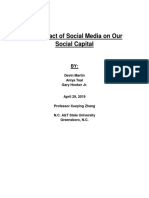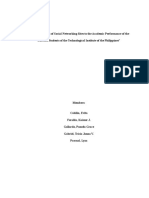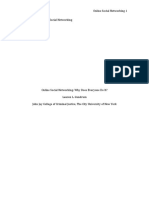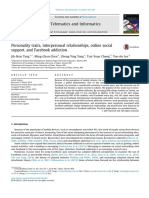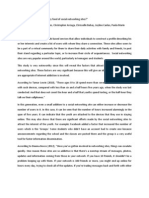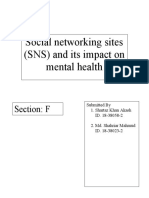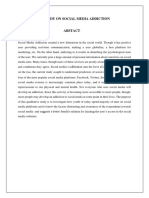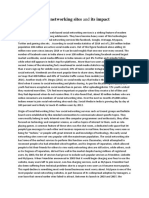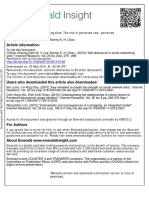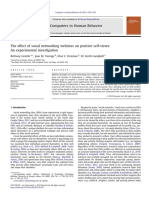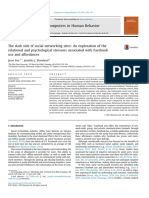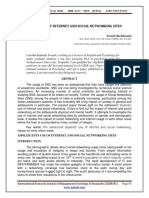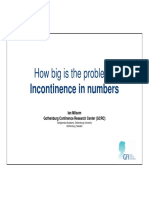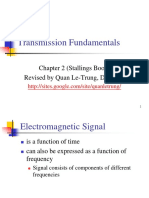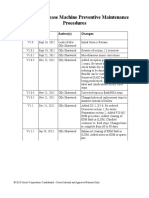0% found this document useful (0 votes)
15 views6 pagesSocial Network and Addiction
The article explores the psychological impact of Social Network Sites (SNSs) and their potential link to addiction, particularly among younger users. It discusses how SNSs facilitate relationships while also promoting individualism and self-absorption, leading to possible addictive behaviors. The authors call for further research to identify signs of psychopathological risks associated with SNS use.
Uploaded by
Yvanna Aires Gadelha SarmetCopyright
© © All Rights Reserved
We take content rights seriously. If you suspect this is your content, claim it here.
Available Formats
Download as PDF, TXT or read online on Scribd
0% found this document useful (0 votes)
15 views6 pagesSocial Network and Addiction
The article explores the psychological impact of Social Network Sites (SNSs) and their potential link to addiction, particularly among younger users. It discusses how SNSs facilitate relationships while also promoting individualism and self-absorption, leading to possible addictive behaviors. The authors call for further research to identify signs of psychopathological risks associated with SNS use.
Uploaded by
Yvanna Aires Gadelha SarmetCopyright
© © All Rights Reserved
We take content rights seriously. If you suspect this is your content, claim it here.
Available Formats
Download as PDF, TXT or read online on Scribd
/ 6




